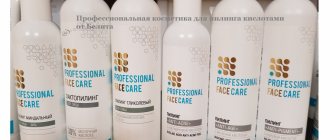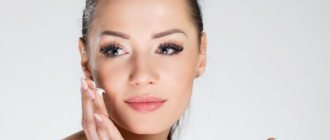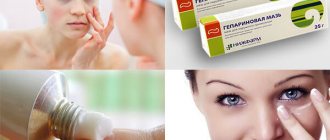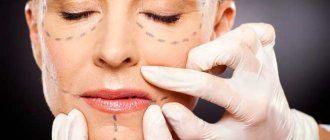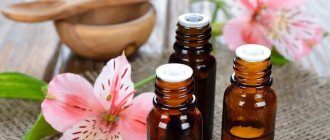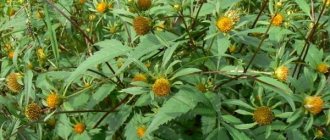They say sleep is one of the best, and most importantly, accessible ways of rejuvenation. And indeed it is. After all, it is at night that our body synthesizes melatonin, which helps restore the body, fights free radicals and reduces the production of stress hormones.
Marina Moldovanova
, manager Department of Systemic Medicine, endocrinologist, nutritionist, doctor of preventive integral and anti-aging medicine, clinic of aesthetics and quality of life GMTClinic
Melatonin is a pineal gland hormone that is produced at night. The peak of its synthesis occurs from 23:00 to 3:00. Moreover, by two o’clock in the morning its level increases 10 times! And in order to regularly receive the right amount of anti-aging hormone, you need to go to bed at a certain time and ensure complete darkness in the bedroom (if light hits the retina, melatonin production decreases).
ISSUES
Hormones stimulate increased production of sebum in the hair follicles, which clogs the opening of the hair from the follicle to the outside and inside the dermis, where it is located, severe inflammation occurs. A familiar bubble and redness forms on the surface of the skin. Usually with age, when hormonal changes end, this problem disappears. However, people with increased sensitivity to androgens in the blood have to live with it all their lives. In any case, whether it is a temporary problem or a permanent one, you should study the issue and learn how to properly deal with acne.
In our turbulent days, in addition to long-known skin problems, another new product for 2022 has appeared - maskne . Maskne is acne that forms where tissue rubs against the skin. During a pandemic, people have to wear medical masks for the safety of themselves and others. This helps protect against the virus, but at the same time provokes increased activity of the sweat and sebaceous glands in the places on the skin that the mask covers. As a result, rashes, irritation and redness appear on the face, called maskne .
Modern medicine and cosmetology successfully treat all types of dermatoses. It is important to learn how to control these ailments and apply the right therapy to the face and body. As a rule, successful treatment of skin problems is complex, consisting of drug therapy and specially designed cosmetics.
Reasons for decreased melatonin synthesis
First of all, it's age. But, alas, we cannot do anything about this reason. But what we can adjust is the sleep schedule and conditions. For sufficient melatonin formation, you need to sleep at least 7 hours a day. At the same time, it is desirable that after waking up you do not remember your dreams - this indicates the depth of your night's rest. Long-term social Jet lag is a violation of the sleep-wake pattern during the week, often leading to a significant lack of melatonin. Frequent flights associated with a radical change in time zones, or night work also lead to a deficiency of this hormone.
Reduces the production of melatonin and the use of certain medications. These, for example, include non-steroidal anti-inflammatory drugs, b-blockers and tranquilizers. Abuse of alcohol, drinks and products containing caffeine affects its concentration.
It is important to note that melatonin production at night directly depends on how much serotonin (the happiness hormone) is synthesized during the day. The more of the latter, the higher the concentration of the long-living hormone in the blood at night.
25% - exactly the same amount of melatonin levels in women are higher than in men.
TREATMENT AND CARE STRATEGY FOR PROBLEM SKIN
Proper cosmetic care for acne-prone skin has its own laws and consists of several necessary stages. Special care cosmetics should:
- relieve inflammation, - restore the skin barrier, - regulate sebum production, - effectively and long-lastingly moisturize the skin, - protect from ultraviolet radiation, - fight pathogenic bacteria, - help the beneficial skin microbiome.
The good news is that the products from the Seratsin LIBREDERM collection cover all these needs and are excellent for acne. It is important to learn how to use them correctly. For example, in the morning you need to first cleanse your face with a cleansing gel, apply a mattifying serum in the afternoon that fits well on top of cosmetics, and in the evening treat it with a night cream that normalizes the functions of the dermis during sleep. You can choose other items from the line, but the stages of care should take place in this order.
What is the difference between 15% gel and 20% cream?
The ability of topical preparations with azelaic acid to penetrate the epidermis and dermis is largely related to the properties of the base.
First, 20% azelaic acid cream was invented. Later it became possible to create a gel, which is a more effective way of delivering the active substance, this made it possible to reduce the concentration of azelaic acid to 15%. Studies have shown that the penetration of 15% gel is 25.3%, and 20% cream is 3.4%16.
AZELAIC ACID, SULFUR AND ZINC - A TRIPLE IMPACT FOR ACNE
Bottles with a red stripe and the inscription AZELAIC present the most effective products in the Seracin LIBREDERM line. They contain a complex of three components, which completely helps against acne.
Azelaine has pronounced anti-inflammatory and antimicrobial properties, normalizes sebum production, which has an anti-acne and depigmenting effect on the dermis and epidermis.
Also, as in the rest of the Seratsin LIBREDERM , there are specially developed components based on natural sulfur and zinc salts. They have sebum-regulating, antibacterial and local anti-inflammatory functions.
No less important are the additional components in the line:
- burdock extract and gulavnik extract - sebum-regulating and antibacterial effect, - finger lime extract - cleansing and antioxidant effect, - BIOLIN prebiotic - supports the natural microflora of the skin.
After using cosmetics with such a composition of components, acne has no chance of survival. Seracin LIBREDERM collection of products acts on the skin like a life-giving elixir, transforming it from sick and irritated to healthy and smooth. Always be well-groomed and beautiful!
Acne treatment using Azelik® gel
Azelik® gel contains azelaic acid as the main active ingredient. The base also contains an emollient - a softening and moisturizing component5. Azelik® has the following effects5:
- normalizes keratinization processes in the sebaceous glands;
- reduces the amount of free fatty acids on the skin;
- has an antibacterial effect, helping to reduce the colonization of Propionibacterium acnes and Staphylococcus epidermidis;
- has an anti-inflammatory effect by reducing the metabolism of neutrophil granulocytes and the free oxygen radicals they produce.
According to the instructions, Azelik® should be used twice a day, morning and evening. First you need to wash your face and wipe your skin dry. The first results from using the gel can usually be noticed after about 4 weeks5.
Advantages of azelaine peeling
- Versatility - carried out for any phototype.
- All-season - does not increase skin sensitivity to sunlight.
- Highly effective with repeated use - no pathogenic microorganisms resistant to peeling.
- Atraumatic and delicate impact.
- Availability and ease of use.
- Activity and safety.
- Short recovery period.
- Well tolerated - azelaic acid is a natural substance for the body.
Minuses
- Course methodology.
- There is a risk of side effects.
- Low effectiveness for severe and progressive skin defects.
What is azelaine peeling?!
Azelaine peeling is a subtype of superficial chemical peeling for gently cleansing the skin and resolving some dermatological problems. The main component of the composition is natural azelaic (nonandioic, 1.7-heptane dicarboxylic) acid, which belongs to the group of dibasic saturated carbon compounds and is obtained by oxidative ozonation of oleic or linoleic acids, and is also found in wheat and barley. The substance normalizes metabolic processes and restores the cellular structure of the skin.
Types of azelaine peeling
By the nature of the impact.
- Classic - exfoliation of the top layer of skin for a superficial effect.
- “Dry” - dehydration of the outer layer of the epidermis with subsequent removal of peeling in the form of a film for a median effect.
According to the form.
- Gel - for uniform and external distribution of components in tissues.
- Aqueous-alcoholic - for deeper skin effects.
Multi-acid all-season gel with azeloic acid is presented in the MESOMATRIX OILY BALANCE non-invasive carboxytherapy system.
Actions of azelaine peeling
- Anti-inflammatory - reduces painful rashes and prevents redness from recurring in the skin and hair follicles.
- Sebum regulating – normalizing the functioning of the sebaceous glands, reducing acne and enlarged pores.
- Keratolytic - stimulation of exfoliation of the stratum corneum, inhibition of keratinocyte growth and cleansing of pores.
- Antiseptic - stopping the spread of harmful microorganisms - fungi and bacteria, preventing infection of the skin.
- Whitening - regulation of the distribution and production of melanin.
- Antioxidant - neutralizes toxins and free radicals.
- Renewing - normalization of microcirculation processes and strengthening of blood vessels.
- Regenerating and rejuvenating - restoring cell division, stimulating barrier structures, increasing tone, reducing wrinkles and evening out tone.
Course of procedures
The basic duration of sessions is 5-12 procedures with an interval of 1 time every 7-14 days. The technique can be repeated after 2-4 months, depending on the condition of the skin and the goals being achieved. Maintenance course - once every 6-8 months.
Side effects
Immediate (2-4 weeks after procedure):
- Dry skin after azelaine peeling is a natural reaction to the action of the peeling. It is removed with soothing gels, masks with aloe, collagen, and chamomile extracts.
- Swelling is an expected manifestation of the composition. Corrected with moisturizing preparations with antioxidant substances.
- Exacerbation of herpes infection - occurs due to individual characteristics or incorrectly collected anamnesis. Controlled by prescribing antiviral drugs.
- Attachment of a secondary infection - manifests itself due to non-compliance with recommendations or violation of antiseptic rules during the procedure. Antibacterial drugs are prescribed.
- An allergic reaction is a response mechanism to the penetration of azelaic acid in the absence of a preliminary sensitivity test. Antihistamines and local regenerating substances are taken.
- Erythema is post-peeling redness of the skin, which is observed within 2-3 hours. In case of persistent manifestations, procedures are carried out to normalize microcirculation in skin cells.
- Hyperpigmentation is a rare undesirable manifestation that occurs when the steps of the procedure are not followed.
- Exacerbation of acne is a possible consequence, which disappears on its own 2-3 months after peeling. Additionally, anti-inflammatory gels (Skinoren, Kuriosin) are prescribed.
Persistent (4-10 weeks after using azelaine peeling) - keloid scars, depigmentation - occur due to internal disruptions in the body, incorrect medical history, and ignoring the recovery period. Restorative drugs and procedures are used.
Rehabilitation period
- Do not apply decorative cosmetics for 24-48 hours.
- Do not visit the bathhouse, swimming pool, sauna, or solarium for 14 days.
- For 5-14 days, use light texture care products to moisturize.
- For 7-15 days, cleanse the skin with milk, foam with aloe extract, collagen, chamomile.
- Apply regenerating and restorative components for 3-5 days.
- For 5-10 days, do not carry out aggressive procedures: scrubs, polishing.
- Always use sunscreens with an SPF of 30 or more. For example, cream block for tanning and age spots, SPF 45.




